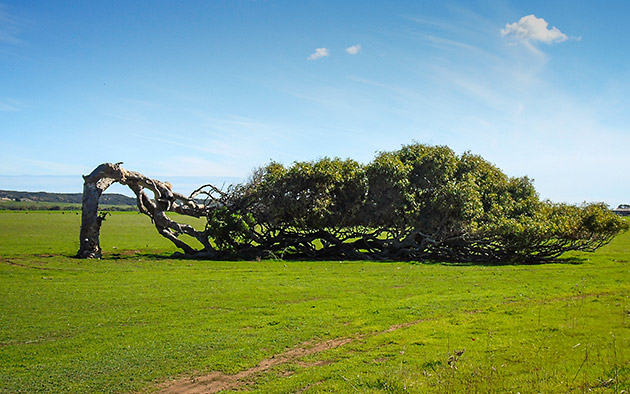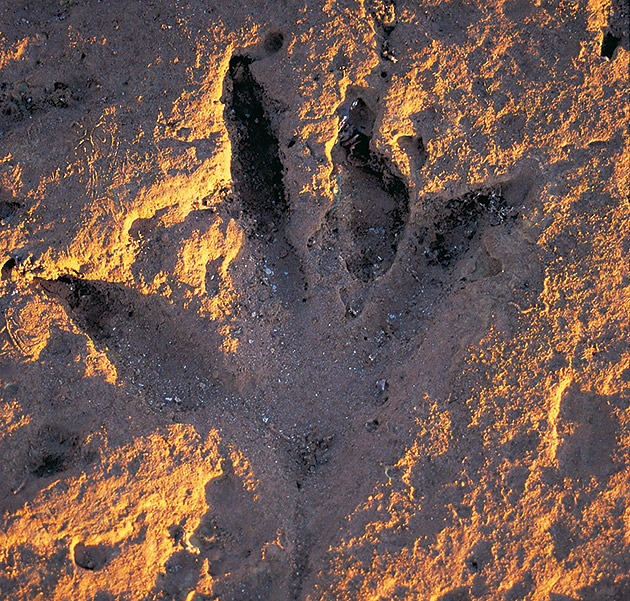Travel & Touring | WA Things To Do
By: Vanessa Pogorelic
When it comes to natural wonders, WA really is quite spectacular, with rare and unique spectacles of nature that you won't see every day.
1. Aurora Australis
The southern hemisphere has its own version of the dazzling northern lights. Called the southern lights or Aurora Australis, it's a rare phenomenon that you can see in Tasmania and New Zealand, and also sometimes in southern WA skies. Caused by a collision of particles and gases in the Earth’s atmosphere which create multicoloured lights in the night sky, your chance of seeing it increases with space weather activity.
Check out Space Weather or Aurora Service for information about where and when the activity may occur. In WA it's possible to see it it across the southern part of the State - the further south the better, but it has been recorded in the Perth Hills and built-up areas like Mandurah. To get lucky, you'll need as little light pollution as possible, including moonlight, and a cloudless night sky.
RELATED: 10 of WA's best stargazing spots »
2. Horizontal Falls
Vertical waterfalls are pretty to look at, but horizontal waterfalls are something else. In the Kimberley’s Talbot Bay, you'll find Horizontal Falls, once described by the illustrious naturalist Sir David Attenborough as “Australia’s most unusual natural wonder”.
The Bay has two narrow rock channels through which the water surges with incredible force and speed as the tide rises and recedes - as much as 10 metres over a six hour period, The tidal pressure and volume of water creates a horizontal waterfall effect. Even more fun - you can take a boat ride through the rock channel as the water is gushing through.
RELATED:
10 of the best waterfalls in WA »
3. Leaning trees
We know WA's coastal winds are strong and unrelenting, but at Greenough Flats near Geraldton, the power of the wind is bought into stark display. Along Brand Highway you can see a stretch of River Gum trees growing horizontally, bent over at their trunks from the constant battering by the strong and salty southerly winds.
Despite the odd appearance, they’re still very much alive and otherwise in great condition. There’s also a purpose-built parking area where you can pull over to take photos. The leaning trees are around 20 kilometres south of Geraldton.

4. King tide, Derby
A king tide is a natural event which sees tidal waters rise to a very high level and WA's North West has some of the greatest on earth. The aptly named King Sound near Derby is home to one of the world's biggest king tides, with waters rising nearly 12 metres. The huge tidal changes happen in late March and late April each year, with the immense tides also creating massive whirlpools in the coastal waters.
As with all tidal changes, the movement of water is caused by the gravitational force of the moon and sun, but the tide is further amplified along WA's Kimberley coast due to the large continental shelf off-shore. As the water comes towards the coast it reaches the shallower water of the shelf, rising in height and flooding in for spectacular effect.
5. Lake Hillier
It’s not WA’s only pink lake but it is one of the pinkest and best known. Lake Hillier on Middle Island, 121 kilometres south-east of Esperance, is distinctive – it looks a bit like a lake full of strawberry milkshake. The colour is due to low levels of nutrients, along with algae and bacteria in the water.
There is another pink lake in there area, close to Esperance, which is actually called Pink Lake and is sometimes confused with Lake Hillier. However the Esperance pink lake has faded to a milky colour due to natural water flows being cut off. But Middle Island’s bright pink lake is still wowing the many local and international sightseers who make the trip to the remote location to see it. Local tour operators offer boat trips to the island and flights over the Lake.
6. Dinosaur footprints
Around 130 million years ago, dinosaurs walking through the area we now know as Gantheaume Point near Broome, left tracks in muddy riverbeds. Overtime those dinosaur footprints hardened and turned to rock and today during very low tides, the dinosaur footprints at Gantheaume Point can be seen just as they were left.
Broome and the surrounding region has the biggest diversity of dinosaur tracks, with prints at different sites from four different dinosaur species, including the long-tailed sauropods. Many prints are longer than 1.5 metres and most likely came from dinosaurs more than 30 metres in length – some of the biggest to ever walk the earth.

7. Staircase to the moon
If you want to see a staircase to the moon, there is nothing quite like the ones you can see along the Pilbara and Kimberley coastline. From April to October, the rising full moon reflects in pools of water in the tidal mudflat corrugations, creating the effect of a long, shimmering streak. The golden ‘staircase’ appears to extend from the horizon all the way to shore.
Broome’s Roebuck Bay is considered the best place to see it, but it also occurs at other spots in the North West including Onslow, Dampier, Cossack and Port Hedland. The staircase is only visible at low tide and when the moon is full. Check staircase to the moon dates for upcoming full moons in the region.
Need a place to stay while checking out WA natural wonders?
Members save up to 20%* on accommodation at RAC Parks & Resorts.
*Terms and conditions apply. Member rate varies according to season. See full website for details.
Last updated September 2020
